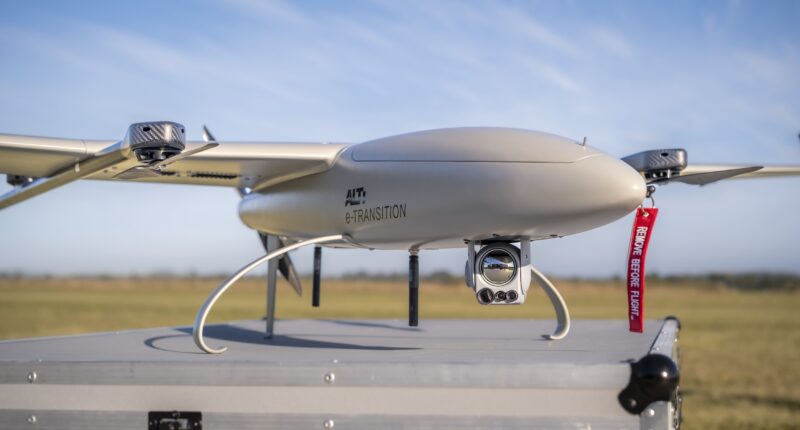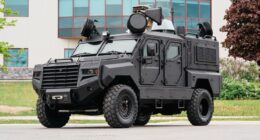ALTI was founded in 2012, not to chase a trend, but to meet a market need — a demand for unmanned aerial vehicle (UAV) that could adapt to rugged environments and extended missions.
What began as a venture focused on multirotor drone systems soon evolved into something far more ambitious: building hybrid aircraft that combined the endurance of fixed-wing platforms with the flexibility of vertical take-off and landing (VTOL) technology.
“We started out before DJI really took over the market,” CEO Ian Share recalled, describing the company’s early days.
In those first years, the startup operated under the name SteadiDrone before pivoting in 2016 to what is now ALTI. That pivot marked the launch of its flagship hybrid VTOL aircraft, the Transition.
“The market wanted something that could take off easily in any environment but also stay in the air for a long time,” he added.
In this episode of Defense Disruptors, we sit down with Share to explore the evolution of hybrid VTOL drones, the shift toward electric propulsion, and how a small South African company carved out a global niche by building rugged, customizable UAVs for the world’s toughest environments.

Are you building game-changing tech for defense? 💪
We’re always looking to feature innovators pushing the boundaries in autonomy, AI, energy, and beyond. If your company belongs in the Defense Disruptors spotlight, get in touch with us here.
Trading Fuel for Fully Electric Flight
What made the Transition distinctive, Share explained, was its hybrid propulsion: electric for vertical lift and combustion-based fuel for horizontal flight. “Fuel still beats batteries when it comes to energy density,” he noted.
Between 2016 and 2024, ALTI produced over 100 units of the platform, gradually expanding the company from a dozen employees to more than 30.
But the evolution didn’t stop there. With global attention turning toward clean energy and simplified maintenance, ALTI began developing a fully electric version of its aircraft in 2024.
According to Share, the change addressed multiple challenges: reduced operational complexity, easier logistics, and lower long-term costs.
“Yes, you lose some endurance compared to fuel, but you gain reliability, lower maintenance, and simpler operation,” he argued.
This transition also aligned with real-world user behavior. “Even though people ask for drones that can fly six to eight hours, they often only need two to three hours of actual flight time,” he pointed out, citing both mission constraints and operator fatigue.
Dual-Use Tech for Demanding Environments
ALTI’s client base spans governments, militaries, and commercial operators in regions like Africa, South America, and Southeast Asia.
Share emphasized that although many of their drones are used by military entities, the systems are classified as dual-use technology. “It’s not a military-exclusive platform,” he said. “Our aircraft are autonomous, capable of executing missions without constant human control.”
Export compliance and regulatory approvals have been central to ALTI’s operations. Share said the company is working closely with both local and international aviation authorities to meet export standards. While full certification as a recognized UAV manufacturer in South Africa is still in progress, he noted that once achieved, it will likely be among the first on the continent.
Africa remains ALTI’s most active market, with deployments in countries such as Zimbabwe, Nigeria, Kenya, Burkina Faso, and the Democratic Republic of Congo. “Fuel quality and availability are a real challenge in many of these places,” Share stated, making the electric model a more viable solution.
The aircraft, he added, are frequently used for border patrol, surveillance, and even conservation work.
Customization as a Competitive Edge
ALTI has also seen growing interest in its platforms for mapping and wildlife management.
In one instance, Share recalled a client request to build a system capable of netting bats for research. In others, drones have been used to count game on conservation land, often requiring high-resolution imaging and dual payload systems.
Customization, he stressed, is a core differentiator. “We’re not a one-size-fits-all manufacturer,” Share said. “Because we build everything in-house, from composite airframes to electronics integration, we can tailor platforms to specific mission needs.”
That flexibility also helps ALTI compete in a crowded market. Share believes the company’s affordability, customization capabilities, and regional proximity to African clients give it an edge.
“A lot of companies offer fixed solutions,” he said. “We work closely with our clients, even adjusting designs to suit their operational requirements.”
Asked about the infrastructure demands of operating electric drones, particularly in defense applications, Share said that ALTI designs its packages to be as self-sufficient as possible.
“We include everything necessary for field operations and consult on support equipment,” he explained. In areas with limited power access, solar or generator-based charging solutions can keep systems operational.

What’s Next: AI, New Aircraft, and Staying Ahead
Looking ahead, Share sees ALTI embracing more autonomy and smart features, including AI-assisted navigation and mobile launch systems.
The company is also exploring other aircraft configurations, including simpler fixed-wing platforms and even manned electric aviation. “As battery tech improves, so will our aircraft performance,” he predicted.
Despite limited external investment, ALTI has grown organically, reinvesting in research, development, and manufacturing.
Share credited the company’s success to its team and their ability to adapt. “Ten years ago, we were one of a hundred companies doing this. Now we’re one in a thousand,” he said.
“What keeps us ahead is listening to the client, solving real-world problems, and building everything ourselves as far as we can.”








